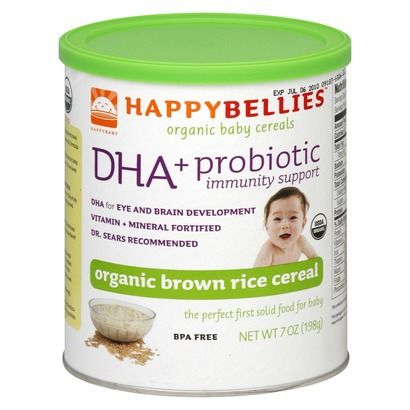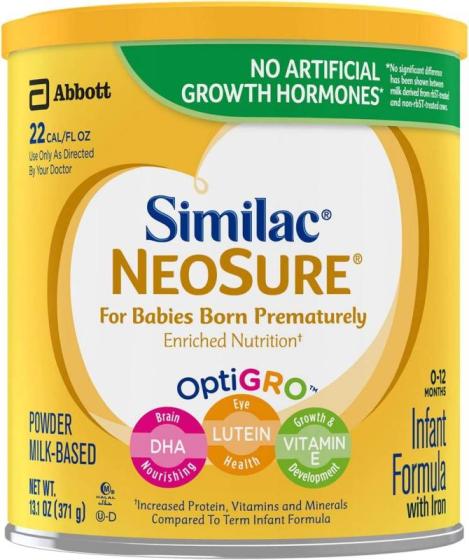Baby food dha
DHA and ARA: What are they and why are they in infant formula?
If your baby consumes Neocate or another infant formula, you have most likely heard of DHA and ARA. You may be wondering “What are DHA and ARA?” and “Why are they added to infant formula?” We’ll fill you in with today’s post!
Docosahexaenoic acid, better known as DHA, and arachidonic acid, better known as ARA, are fatty acids found in breast milk, as well as in some foods, like fish and eggs. (Fatty acids combine to make fat molecules.) Both DHA and ARA are classified as long-chain polyunsaturated fatty acids, or PUFAs, a special type of fatty acid. They each play important roles in our bodies and health throughout our lifetimes.
The human body can make small amounts of DHA and ARA from α-linolenic acid (ALA) and linoleic acid (LA), respectively. ALA and LA are also classified as PUFAs. In fact, ALA and LA are known as “essential fatty acids”. They are the only two essential fatty acis, and are essential because, unlike other fatty acids, our bodies cannot make them, so they MUST be obtained from our diet. ALA and LA are found various foods, as well as in breast milk and in infant formulas.
DHA and ARA play very important roles in early brain and eye development, although they aren’t yet classified as “essential.” The levels of DHA and ARA in the brain rapidly increase during the last trimester of pregnancy and throughout the first two years of life. While breast milk naturally contains ALA and LA, it also contains DHA and ARA. Generally the more fish in a lactating mom’s diet, the higher the levels of DHA and ARA in her breast milk.
It turns out that infants create very little DHA and ARA from the ALA and LA they get from breast milk and/or infant formula. Years ago, infant formulas contained ALA and LA, but no DHA or ARA. Research from back then found higher blood levels of DHA and ARA in breast-fed infants in comparison to formula-fed infants, and there’s also evidence that there may be some benefits to having preformed DHA and ARA during infancy.
Because of these findings, almost all infant formulas are now fortified with pre-formed DHA and ARA. Although experts agree that breast milk is the ideal nutrition for infants (we do too!), there are some situations where breast feeding is not possible or has to be supplemented with infant formula. One great example is infants with severe and/or multiple food allergies. In cases where an infant formula is needed to supplement or replace breast milk, experts recommend using an infant formula which contains between 0.2% and 0.5% of total fatty acids as DHA, and at least as much ARA as DHA (Koletzko, 2008).
Although experts agree that breast milk is the ideal nutrition for infants (we do too!), there are some situations where breast feeding is not possible or has to be supplemented with infant formula. One great example is infants with severe and/or multiple food allergies. In cases where an infant formula is needed to supplement or replace breast milk, experts recommend using an infant formula which contains between 0.2% and 0.5% of total fatty acids as DHA, and at least as much ARA as DHA (Koletzko, 2008).
The levels of DHA and ARA in Neocate infant formulas fall right in the middle of this range. In fact, the level of DHA in Neocate infant formulas is comparable to the worldwide average found in breast milk of about 0.32% (Brenna, 2007). Here are the levels of DHA and ARA in Neocate infant formulas available in the United states, expressed both as a percentage and as milligrams in 100 calories (5 fluid ounces of formula, when prepared as directed):
| Neocate® Infant DHA/ARA | Neocate® Syneo®Infant | |
| DHA, % Total Fatty Acids | 0. 35% 35% |
0.35% |
| DHA per 100 calories | 16.9 mg | 16.2 mg |
| ARA, % Total Fatty Acids | 0.35% | 0.35% |
| ARA per 100 calories | 16.9 mg | 16.2 mg |
The addition of DHA and ARA to infant formulas is supported by the US Food and Drug and Administration (FDA), the World Health Organization, the National Academy of Sciences, the American Dietetic Association, and various other regulatory bodies around the world.
You might have also come across EPA, or eicosapentaenoic acid (what a mouthful!), in your readings. EPA is another type of fatty acid. The human body can make EPA from ALA, and the human body can then convert EPA into DHA. EPA in the diet is naturally found in fish. EPA is not yet added to any infant formulas in the US, as ALA and DHA are already in formula.
We hope this helps answer your questions about DHA and ARA, but feel free to ask if you have any more!
-Mallory & Rob, Nutrition Specialists
Last updated January 24, 2019
Photo:
http://www.flickr.com/photos/pfly/115546916/sizes/m/in/photostream/
Sources:
- FDA/CFSAN Office of Nutritional Products, Labeling and Dietary Supplements July 2002.
- The US Food and Drug Administration. Questions & Answers for Consumers Concerning Infant Formula. http://www.fda.gov/Food/FoodSafety/Product-SpecificInformation/InfantFormula/ConsumerInformationAboutInfantFormula/ucm108079.htm. Updated December 14, 2012. Accessed March 3, 2013.
- International Formula Council (IFC) Statement on DHA/ARA and Infant Formula. http://www.infantformula.org/news-room/press-releases-and-statements/infant-formula-and-dha/ara.
 Published March 1, 2010. Accessed March 12, 2013.
Published March 1, 2010. Accessed March 12, 2013. - Koletzko B, et al. The roles of long-chain polyunsaturated fatty acids in pregnancy, lactation and infancy: review of current knowledge and consensus recommendations. J Perinat Med. 2008;36:5-14.
- Uauy R et al. Term infant studies of DHA and ARA supplementation on neurodevelopment: results of randomized controlled trials. J Pediatr. 2003 Oct;143(4 Suppl):S17-25.
- Birch EE, et al. The DIAMOND (DHA Intake And Measurement Of Neural Development) Study: a double-masked, randomized controlled clinical trial of the maturation of infant visual acuity as a function of the dietary level of docosahexaenoic acid. Am J Clin Nutr. 2010;91:848-59.
- Brenna JT, et al. Docosahexaenoic and arachidonic acid concentrations in human breast milk worldwide. Am J Clin Nutr. 2007;85:1457-64.
Published: 03/12/2013
Are infant formulas with DHA and ARA safe?
Studies show that the naturally occurring polyunsaturated fats docosahexaenoic acid (DHA) and arachidonic acid (ARA) found in human milk are beneficial for babies’ brain, neural, and eye development. However, the synthetic versions of these compounds manufactured under the names DHASCO and ARASCO, but commonly referred to as DHA and ARA in infant formula, are a source of great controversy.
However, the synthetic versions of these compounds manufactured under the names DHASCO and ARASCO, but commonly referred to as DHA and ARA in infant formula, are a source of great controversy.
For years, infant formula manufacturers have been touting synthetic DHA and ARA as fatty acids that benefit infant brain development, but there is little evidence to support these claims. As early as 1996, some experts raised concerns about their use in infant formula. In 2010, the United States Department of Agriculture (USDA) called for a ban on the addition of DHA and ARA to infant formula sold with the “USDA organic” seal. Without commenting on the additives’ safety or appropriateness in standard formulas, the USDA found that the synthetic DHA and ARA oils should not be allowed in organic foods, particularly since they are extracted from fermented algae and fungus through a process that utilizes the known neurotoxic chemical, hexane. In 2011, the National Organic Standards Board voted to allow the synthetic fatty acids to be included in organic foods as long as hexane isn’t used in the manufacturing process (even though the process for extracting the fats uses genetically modified substances that are not organic). According to the Cornucopia Institute, a consumer advocacy group, it is unknown what substance Martek currently uses to extract DHA and ARA from its algae and fungus. Cornucopia observes that “[a]lthough Martek told the board they would discontinue the use of the controversial neurotoxic solvent n-hexane … they did not disclose what other synthetic solvents would be substituted.”
According to the Cornucopia Institute, a consumer advocacy group, it is unknown what substance Martek currently uses to extract DHA and ARA from its algae and fungus. Cornucopia observes that “[a]lthough Martek told the board they would discontinue the use of the controversial neurotoxic solvent n-hexane … they did not disclose what other synthetic solvents would be substituted.”
A systematic review of the scientific literature updated by the Cochrane Collaborative in 2016 concluded that there is no scientific evidence of benefits to healthy, full-term babies, and when available research is pooled, the same is true for premature infants. One study suggests that DHA needs may vary widely among infants, raising questions about a manufacturer’s ability to identify appropriate levels. The U.S. Food and Drug Administration does not require pre-market testing of infant formulas and accepts the manufacturers’ statements of safety and effectiveness without independent review, making parents’ assessment of risks and benefits even more difficult.
Formula-feeding mothers will need to make their own decisions about whether they want to give their baby formula with added DHA and ARA knowing that there may be some risks to ingesting the synthetic oils. The Cornucopia Institute has reported on babies experiencing symptoms such as vomiting and diarrhea that resolve with a switch to a DHA- and ARA-free formula, as well as instances of dehydration and seizures requiring hospitalization. However, DHA and ARA-free formulas are becoming more and more difficult to find. While a study of such food additives by the Center on Budget and Policy Priorities found that they are typically not worth the added cost, the December 2015 Consumer Reports found only one formula without the additives available in the U.S. market, and that was marketed for toddlers rather than infants.
If you do choose to use a formula with these additives, you may want to contact manufacturers and find out the specific levels of DHA and ARA in their products, since some contain more than others. Contacting the makers with product questions ensures that you get the most up-to-date information. If your baby experiences signs of gastrointestinal upset with a formula that contains DHA and ARA (symptoms may include diarrhea, foul-smelling gas, vomiting, abdominal cramping, or dehydration), speak to his pediatrician about other options, including donor milk. Alternatively, you may be able to take steps to relactate. Even if you are unable to fully breastfeed your child, you may be able to reduce the amount of formula—and therefore DHA and ARA—that he consumes.
Contacting the makers with product questions ensures that you get the most up-to-date information. If your baby experiences signs of gastrointestinal upset with a formula that contains DHA and ARA (symptoms may include diarrhea, foul-smelling gas, vomiting, abdominal cramping, or dehydration), speak to his pediatrician about other options, including donor milk. Alternatively, you may be able to take steps to relactate. Even if you are unable to fully breastfeed your child, you may be able to reduce the amount of formula—and therefore DHA and ARA—that he consumes.
Last updated November 21, 2020
Fatty acids in infant formulas
— Polina Alexandrovna, what are fatty acids for and why are they important, in particular, for the development of the baby?
— The nutritional role of fatty acids is multifaceted. At their expense, the baby receives about 50% of the energy. In addition, fatty acids are part of the cell membranes of the myelin sheath of neurons ( cells of the nervous system ), which is formed during the first year of life. They also participate in the synthesis of various hormones, improve the absorption of vitamins.
They also participate in the synthesis of various hormones, improve the absorption of vitamins.
For a child of the first year of life , the main source of fatty acids will be mother's milk or milk formula - there are not so many fatty acids in the first complementary foods from vegetables and cereals.
— What are the fatty acids in breast milk? Are they different from cow's milk fatty acids?
— Fatty acids are almost the main composition of mother's milk. Their total concentration averages 40-45 g / l, but may be slightly less or more. "Hinder" breast milk is richer in fatty acids than "forward" breast milk. In addition, lipids (fats) of human milk are 95% are represented by triglycerides , which are composed of fatty acids and glycerol.
Saturated and unsaturated fatty acids are isolated, their ratio is approximately the same. Cow's milk contains 25% less saturated fatty acids , so not only its protein, but also its fat composition differs significantly from that of breast milk.
Read also
- about the composition and properties of breast milk
— How do manufacturers adapt milk formula for fat content?
— Infant formula uses vegetable oils or milk fat, which also contains fatty acids. Every year, manufacturers have more and more technical capabilities and the results of numerous studies that allow improving the composition of the mixture.
For example, we recently talked about palm oil. A few years ago, it was considered an excellent source of fatty acids for baby food. But, according to recent data, palm oil fatty acid itself differs from breast milk palmitic acid, which leads to poor absorption. Therefore, manufacturers are forced to look for alternative sources of fatty acids to palm oil in order to adapt the mixture not only in quantity but also in quality. It is important that the child not only receives the necessary substances from the mixture, but also absorbs them.
- Is it possible to understand the composition and amount of fatty acids from the description on the packaging of the infant formula?
— In mixtures registered in Russia and the Customs Union, the content of certain oils is permitted by law: all tests have been completed, the products are certified. To find out the name and amount of fatty acids, just refer to the full composition of the milk formula on the back of the pack or can. On the front side, the manufacturer, as a rule, declares only two or three main components.
— Are fatty acids from vegetable oils, fish oils, and milk fat different?
- Fatty acids from different sources may be different in structure. For example, the amount of palmitic acid in palm oil is quite large - due to it, it would seem that it is easy to enrich the milk formula. But due to the different structure, the absorption of palmitic acid from palm oil by a child becomes quite difficult. Researchers say that such palmitic acid is not only poorly absorbed, but also forms insoluble calcium compounds in the intestinal lumen, which lead to constipation and the removal of calcium from the body. Therefore, the differences will be both quantitative and structural.
Therefore, the differences will be both quantitative and structural.
— Which vegetable oils should be avoided in baby food?
- Strictly prohibited and not used in baby food sesame and cottonseed oils . Strict restrictions do not apply to palm oil and rapeseed oil. But despite the fact that their use is permitted and regulated by technical regulations, due to the peculiarities of the perception of by the children's body, it is better to avoid palm and rapeseed products when choosing food for children.
- Essential acids that the mixture cannot do without include linoleic and alpha-linolenic acid . Additionally, the manufacturer can make docosahexaenoic acid, arachidonic acid and eicosapentaenoic acid.
MAMAKO ® Premium infant formulas based on natural goat's milk do not contain palm oil. They include healthy fats, including linoleic and alpha-linolenic acids, omega-3 and omega-6 fatty acids (DHA and ARA). Palmitic acid in goat formulas is in a position where it is better absorbed, unlike palmitic acid from palm oil.
Palmitic acid in goat formulas is in a position where it is better absorbed, unlike palmitic acid from palm oil.
— Is it possible to give fatty acids to babies in the form of supplements, or is it less digestible this way?
- Children's supplements should be tested on children, but almost no one does such research. The question is also open about the form of release of the drug - it is quite difficult to give a child a capsule or fish oil. In addition, the process is not justified, because if the food is enriched with a sufficient amount of fatty acids, it is much easier to give it to a child than to look for drugs approved for small children separately. This is a difficult undertaking, which makes no sense to engage in if a good adapted mixture is selected.
— Is there an intolerance to fatty acids?
— In my practice, such cases have not occurred, because fatty acids are not given as a supplement to young children. It is difficult to trace a specific reaction. Fatty acids are added to the milk mixture, which are found in breast milk and, therefore, are easily absorbed and tolerated by the child. The exception is palmitic acid of palm oil, but violent reactions of intolerance to such an acid have also not been identified.
Fatty acids are added to the milk mixture, which are found in breast milk and, therefore, are easily absorbed and tolerated by the child. The exception is palmitic acid of palm oil, but violent reactions of intolerance to such an acid have also not been identified.
— What are the symptoms of fatty acid deficiency in young children?
- A small child develops gradually, has its own characteristics, but it is impossible to ask him if he remembers information well (fatty acids affect intelligence). Therefore, there are no clear symptoms that would indicate a lack of a particular fatty acid. But given the knowledge in which processes fatty acids take part, certain signs may make you think about the lack of fatty acids in the baby's diet.
Indirect non-specific signs of fatty acid deficiency:
- immunosuppression and susceptibility to infections;
- lethargy, decreased activity;
- irritability and nervousness;
- blurred vision;
- deterioration of skin, hair, nails;
- growth retardation and mental development.

— What role do fatty acids play in the nursing and feeding of premature and small babies?
— Premature and underweight babies are at risk for the development of neurological diseases, visual impairment, because they do not have time to get all the necessary nutrients during the prenatal period of life. The nutrition of such children should be monitored especially carefully, and the more saturated with fatty acids the infant formula for them, the better .
- "Baby milk" can give a one-year-old child the necessary amount of fatty acids?
- Baby milk is a mixture of the third stage, it also includes the milk drink MAMAKO ® 3 Premium. After one year of age, whole milk is still not allowed , so this mixture perfectly compensates for the lack of milk nutrition. It can be considered as an additional source of fatty acids. However, you should not count on the fact that the mixture in 1 year will cover one hundred percent of children's needs..jpg) With age, the needs of the child increase, and he must receive more and more fatty acids from adult food.
With age, the needs of the child increase, and he must receive more and more fatty acids from adult food.
Fatty acids are the main source of energy for a small child. In addition, they play an important role in the development of the nervous system and immunity, the formation of vision and the absorption of vitamins. Therefore, the presence in the mixture of such additional fatty acids as arachidonic and docosahexaenoic acids enhances the beneficial effect of other nutritional components on the development of a newborn and a child up to a year old.
* Breast milk is the best food for babies. WHO recommends exclusive breastfeeding for the first 6 months of a child's life and continued breastfeeding after complementary foods are introduced until the age of 2 years. Before introducing new products into the baby's diet, you should consult with a specialist. The material is for informational purposes and cannot replace the advice of a healthcare professional. For feeding children from birth.











